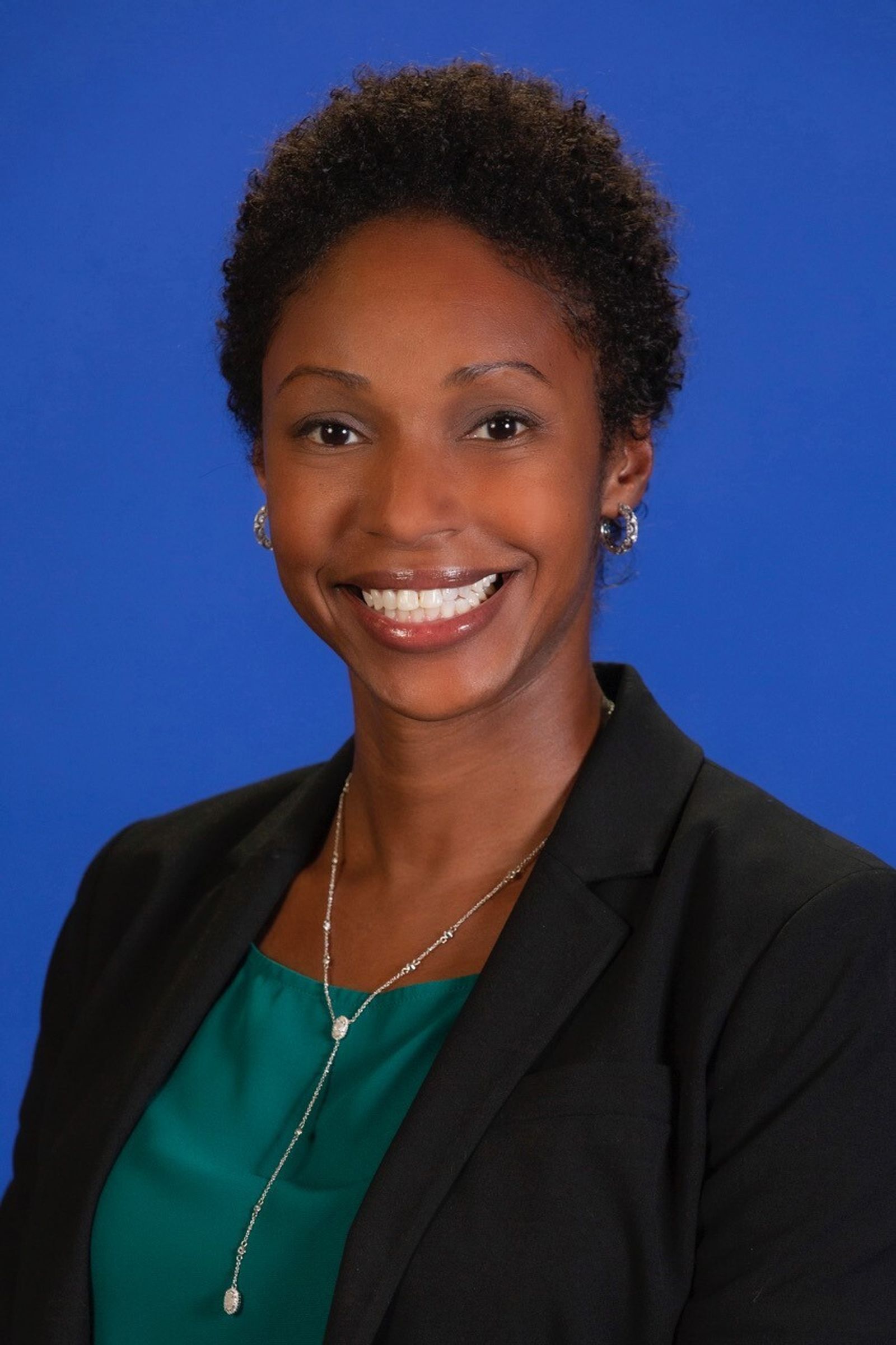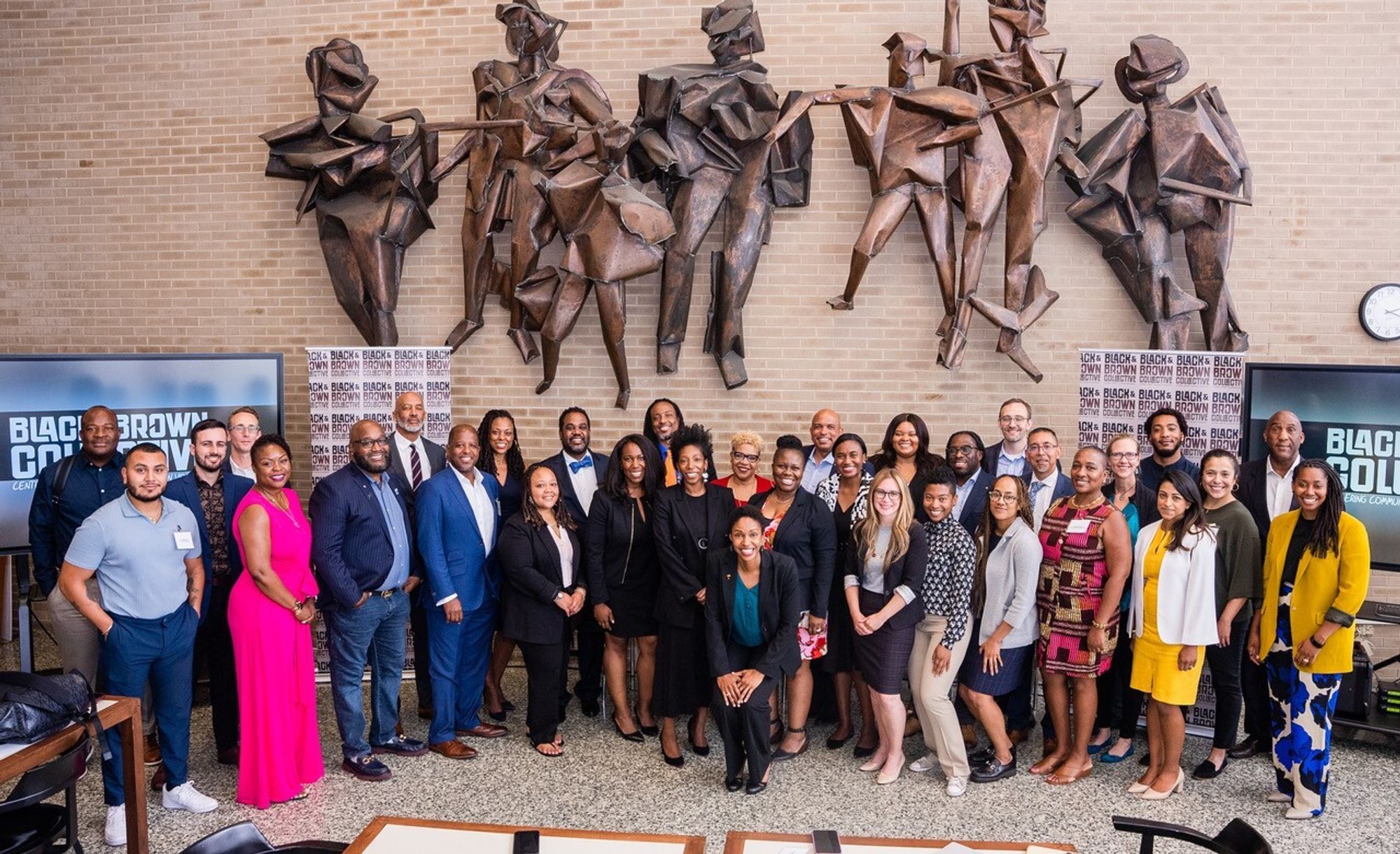In early 2021 — shortly after the Biden-Harris Administration sought actions to curb the surge in gun violence that coincided with the COVID-19 pandemic — a group of frustrated researchers realized that a more accurate narrative about the causes, consequences and solutions to gun violence was needed.
With that urgent ethos in mind, along with the desire for connection among researchers of color already enmeshed in gun violence prevention and community violence intervention work, the Black & Brown Collective was born.
With seed money from philanthropy (including an inaugural $300,000 grant from The Joyce Foundation) the Collective — more than two dozen leading researchers and academics of color from the United States and Canada — informally launched In July 2023 in Chicago, unveiling a strategy to promote existing evidence related to gun violence research, to help shift narratives about community violence, and to highlight and increase diversity in the field of gun violence researchers.
Dr. Shani Buggs of the University of California, Davis, is one of the founders of the Collective, which has developed an ambitious research agenda, meets monthly, engages community partners, and has its sights set on increasing capacity among its ranks by building pathways for Black and brown researchers into the field and leveraging partnerships to inform lasting policy change.
We caught up recently with Dr. Buggs, one of the nation’s leading experts on community violence intervention and using anti-racist methods to reduce gun violence, about the status of the Collective and what’s to come.
The Need
The Joyce Foundation (JF): Please tell us a bit more about the circumstances that led to the need for the Collective.
Dr. Shani Buggs (SB): The Collective was born out of frustration among gun violence prevention researchers around the country, Black and brown scholars, who felt like not only was our collective work not being recognized and appreciated in the conversations around the increasing gun violence in 2020, but our expertises were also largely being excluded, and the community solutions and insights that our research was bearing out were not part of the conversations.
Diversifying the Field
JF: Can you talk about the current state of the field and why one of the objectives of the Collective is to diversify it?
SB: Important research is happening in the gun violence field by scholars I deeply respect. Our group was formed to ensure that more perspectives – and particularly, the perspectives and insights of those closest to and most impacted by the very violence we seek to prevent – are in the discussions, so that research and evidence can have a greater impact.
Representation
JF: You've mentioned previously that gun violence was not your original area of research interest but that changed when you noted the disparity in attention that mass shootings in predominantly white areas receive compared to shootings in and around predominantly Black communities. How do you convince researchers of color to join the ranks of gun violence prevention and CVI work?
SB: The challenge is not with getting Black and brown scholars on board. While the numbers of Black and brown scholars who do gun violence research is miniscule compared to the burden of the problem and compared to the numbers we need, there are a number of us who are directly trained in gun violence prevention or violence prevention more broadly, or intersections of community gun violence and education, housing, intimate partner violence, suicide, etc. There are a number of us out there. The challenge is finding each other and elevating the thought leadership of those conducting this important research. One of the reasons why this network organization is so important is connecting all of us.
The beauty of the Collective is also that it is truly multidisciplinary. We recognize that to solve a complex issue like gun violence we need people who are experts in housing, education, economic development, sociology, history, firearm policy, social policy, etc. We need all different kinds of people at the table. We’re bringing all of these scholars together who work at the intersections of these other complex issues and have a role to play in how we address gun violence.
JF: Is this how you start to shift the narrative?
SB: Right. We don’t address gun violence by just focusing on the gun or just focusing on the violence. We address gun violence by addressing the kinds of factors, structures and supports that make communities safe and make communities healthy, as well as addressing the trauma and the more proximate factors that elevate risk for violence. Representation is critical. When you begin to think about gun violence as a symptom of much deeper, underlying issues happening within a society, and then you recognize that we need experts in all these various sectors and disciplines to come together, you see that we need representation from people who not only look like the communities that are most disproportionately impacted but represent all these different areas of expertise and points of healing.
Philanthropy and Funding
JF: Can you talk about the role philanthropy has played in advancing the Collective, and why it matters that philanthropy is involved in such initiatives?
SB: Philanthropy is critical in both the flexibility and ingenuity in terms of thinking about how we tackle new problems differently and how to tackle old problems with new perspectives, fresh eyes. The Joyce Foundation played an integral part in our inception because it was the first grant we received. Joyce played a key role in helping us map out our strategy and helping to sustain this network. We hope to continue to leverage our relationships with philanthropic organizations to help braid dollars together and help create a sustainable fabric of infrastructure for this work.
JF: Is philanthropy the only needed funding partner?
SB: Just like we’ve seen philanthropy play an integral role in supporting Community Violence Intervention and Violence Prevention efforts and helping to make the case that government, business, other sectors of public safety and community development, etc., play a role in funding those efforts, the same is true on the research side. If we think about embedding research into practice then we should also embed the dollars associated with understanding the problem throughout all sectors of funding whether that’s private, public, business, nonprofit entities. Philanthropy plays an important early step in helping to demonstrate need and helping us to dream big and imagine what the possibilities are and lay those foundational pieces. But we’re also looking towards funding through federal grants and state grants as well. As we get rolling we will be looking to other forms of funding in order to make sure that our work is sustained.
“We are researchers in service of the prosperity of our communities." - Dr. Shani Buggs

Engaging Community
JF: In addition to the Collective providing connection for fellow researchers, does it also provide opportunities to strategize on the best ways to engage community?
SB: One of the important challenges that we face in this work is how we engage community. Community members, particularly in communities that have high rates of gun violence and high rates of distrust in all systems because systems have let them down over and over again, also have distrust in research, because research too often has been either indifferent to their needs or harmful. It’s important that we have authentic connection and relationships if we really want to learn and elevate community insights and solutions, and not tokenize them or use them for our own individual success or academic accolades. The beauty of the Collective is that we already understand that. The people at the table have those authentic relationships with community. We are researchers in service of the prosperity of our communities. So the work that we do is really about not just throwing in community members at the end of a research project or partnering with them to get a grant, it really is about that authentic relationship. The scholars we are working with already get that and already have those relationships.
Shifting the Narrative
JF: You’ve talked about the Collective’s role in systemic change. Shifting public dialogue in how we talk about gun violence — policy, prevention etc. — seems to be a critical but really difficult part of that. So how do we start? And what role can the Collective play?
SB: The question around narrative always reminds me of being at a conference where a mother was talking about her two sons. She lost her first son — he was killed by gun violence — and she was supported by the community. There was empathy and sympathy and she was embraced. Her second son later took a life with a gun and was given a life sentence, and she was vilified, ostracized. No one supported her then. But she still lost two sons to gun violence. That kind of complexity… We know that gun violence is most often related to interpersonal disputes by people who know each other, often people who are more than acquaintances. When we talk about that kind of complexity, we can’t just talk about the narratives in terms of “good” and “bad” — it’s far more complicated than that.
People who are proximate to the issue, we recognize it because we’re talking to people who tell way more nuanced stories than what we hear in the media. That’s another reason representation is so critical and why the Collective is so important. We need those individuals who have that nuanced perspective to be the ones talking about the work, to be the ones doing the research, to be the ones setting policy and advocating what we need in our communities because if we don’t, we keep having this really narrowly conceived discussion that does not help us get to sustained peace, which is what we’re trying to get to.
Next Steps and Policy
JF: The Collective has garnered a lot of attention among fellow researchers and academics. What has the response been from policymakers and other entities, and how is it impacting policy and/or the Collective’s strategic plan?
SB: (laughs) I don’t want to jinx any conversations but there’s been a recognition of the work we’re doing to uplift existing projects and research of established scholars, scholars committed to equity-centered work, and we’re having conversations with (policymakers) about how we can partner and collaborate. It’s exciting that following the social justice summer of 2020, the recognition of the need to move differently in terms of racial equity and justice and really being inclusive and thoughtful in bringing in voices that are traditionally excluded has shifted.
While nationally we’ve seen some retraction from those commitments and even backlash against equity and diversity, which is really disheartening, there are still a lot of public and private entities committed to equity-centered research, equity-centered practices, and supporting communities that have been traditionally excluded. Among those entities, there’s a genuine appreciation for the fact that we’re more thoughtful and more impactful when we have diverse voices and diverse insights at the table, leading these efforts. I’m thrilled that we have a number of committed and interested partners now, and we are excited to build on the momentum we’ve already gained. There is so much to come – we are just getting started!
About The Joyce Foundation
Joyce is a nonpartisan, private foundation that invests in evidence-informed public policies and strategies to advance racial equity and economic mobility for the next generation in the Great Lakes region.
